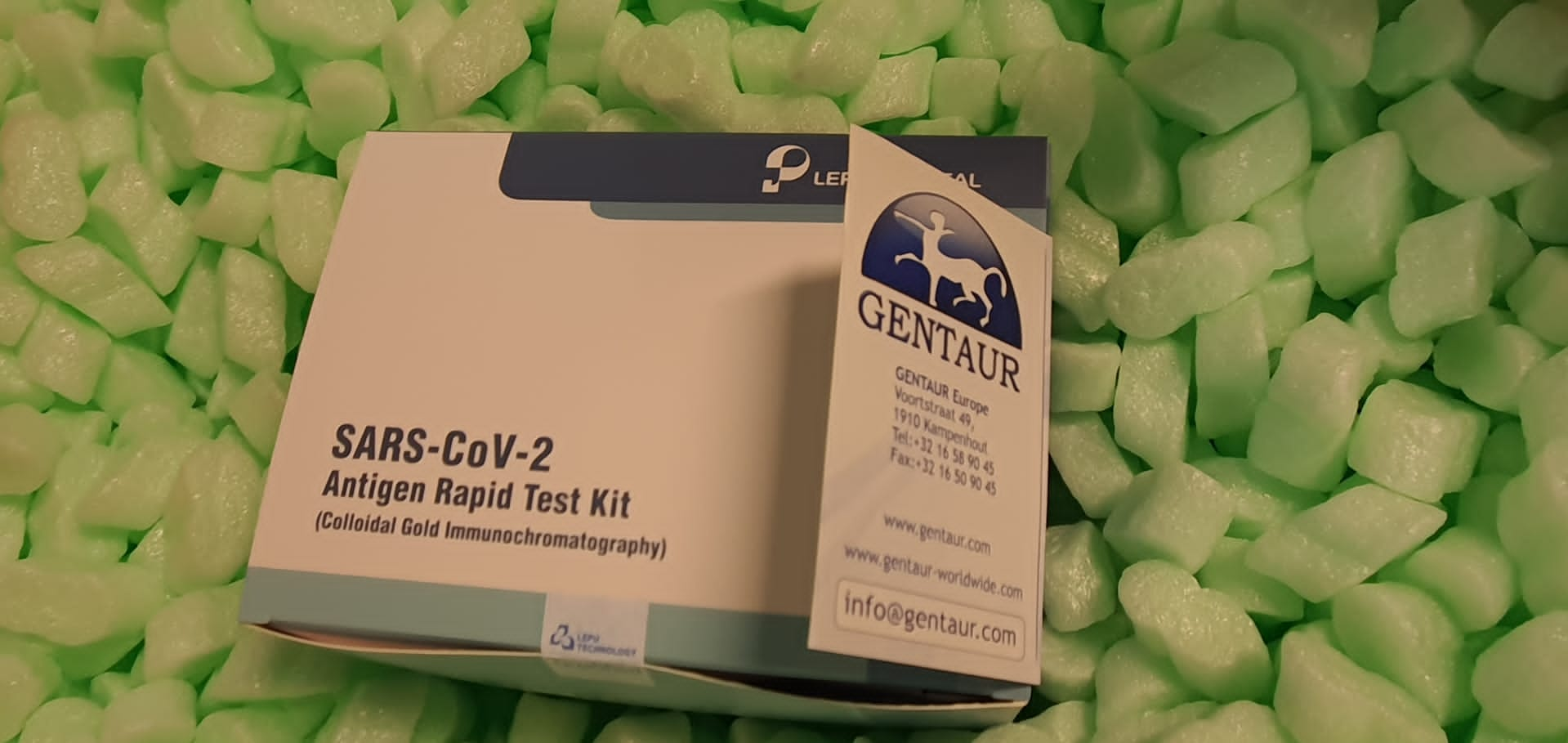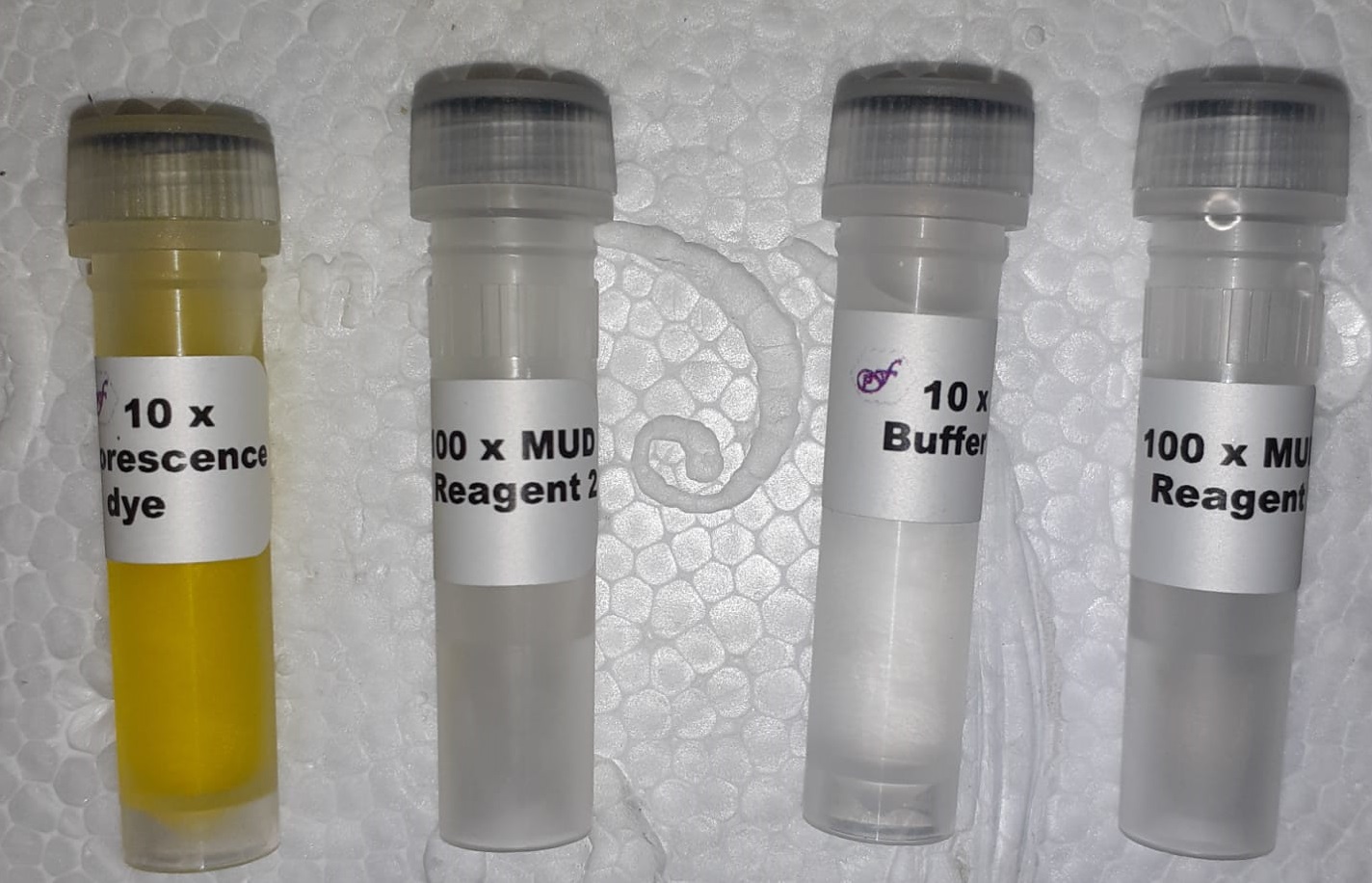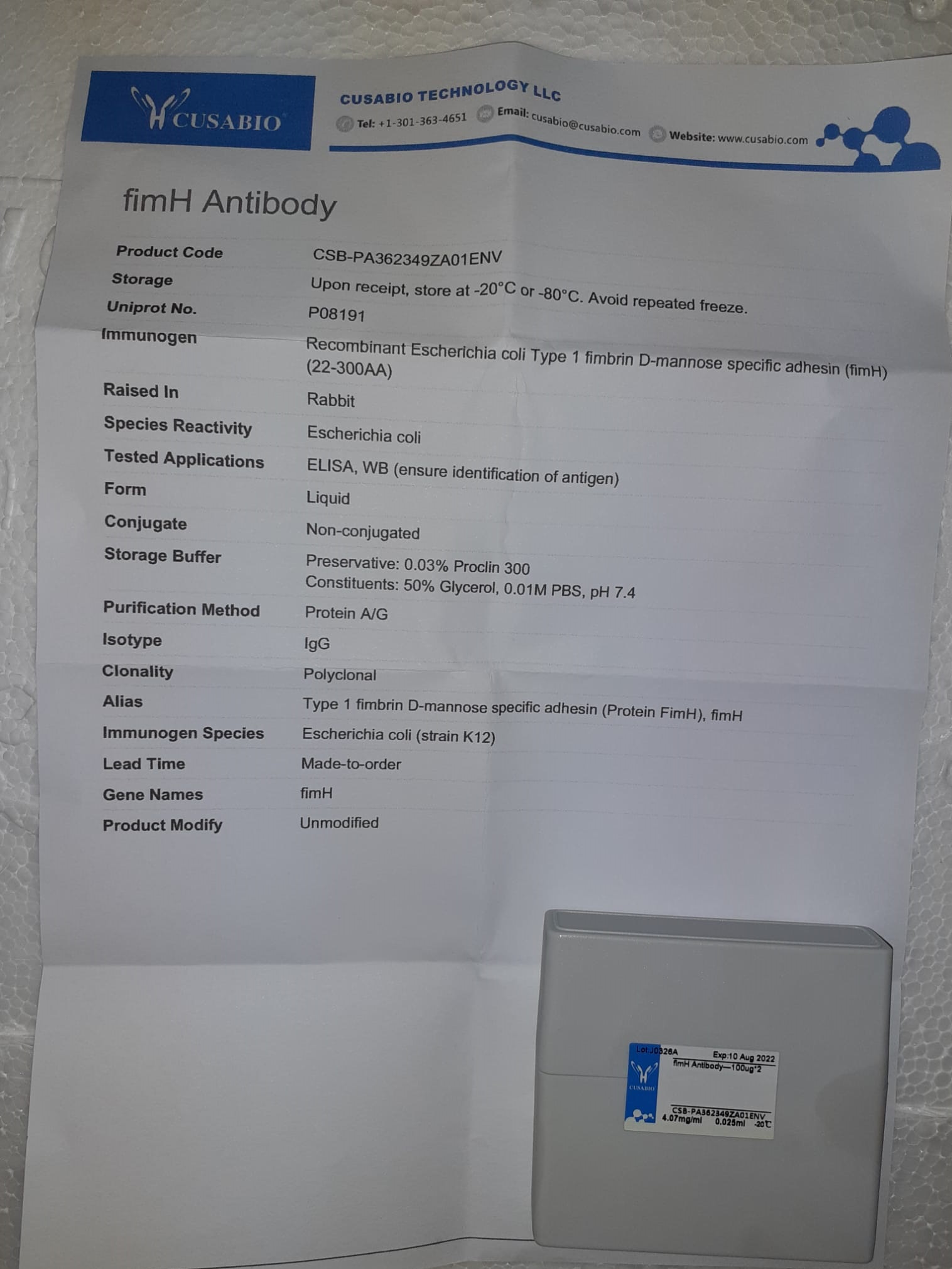
Advancing HIV Broadly Neutralizing Antibodies: From Discovery to the Clinic
Despite substantial progress in confronting the global HIV-1 epidemic since its inception in the 1980s, better approaches for both treatment and prevention will be necessary to end the epidemic and remain a top public health priority. Antiretroviral therapy (ART) has been effective in extending lives, but at a cost of lifelong adherence to treatment. Broadly neutralizing antibodies (bNAbs) are directed to conserved regions of the HIV-1 envelope glycoprotein trimer (Env) and can block infection if present at the time of viral exposure. The therapeutic application of bNAbs holds great promise, and progress is being made toward their development for widespread clinical use. Compared to the current standard of care of small molecule-based ART, bNAbs offer: (1) reduced toxicity; (2) the advantages of extended half-lives that would bypass daily dosing requirements; and (3) the potential to incorporate a wider immune response through Fc signaling. Recent advances in discovery technology can enable system-wide mining of the immunoglobulin repertoire and will continue to accelerate isolation of next generation potent bNAbs. Passive transfer studies in pre-clinical models and clinical trials have demonstrated the utility of bNAbs in blocking or limiting transmission and achieving viral suppression.
These studies have helped to define the window of opportunity for optimal intervention to achieve viral clearance, either using bNAbs alone or in combination with ART. None of these advances with bNAbs would be possible without technological advancements and expanding the cohorts of donor participation. Together these elements fueled the remarkable growth in bNAb development. Here, we review the development of bNAbs as therapies for HIV-1, exploring advances in discovery, insights from animal models and early clinical trials, and innovations to optimize their clinical potential through efforts to extend half-life, maximize the contribution of Fc effector functions, preclude escape through multiepitope targeting, and the potential for sustained delivery.
Symptoms, antibody levels and vaccination attitude after asymptomatic to moderate COVID-19 infection in 200 healthcare workers
Aim: In Germany, the willingness to be vaccinated against COVID-19 is rather low among medical staff. We collected data on symptoms, antibody titers and vaccination readiness from clinic employees at a municipal clinic who had already been through a COVID-19 infection (asymptomatic to moderate). We also examined the antibody titers for their possible importance as an individual decision-making aid with regard to vaccination.
Method: 200 employees of our municipal clinics were included in the study. COVID-19 antibody determination was performed using an ELISA (EUROIMMUN™, PerkinElmer, Inc. Company). The participants were given an anonymous questionnaire containing anthropometrical issues, symptoms of the infection and questions concerning the vaccination decision. Finally, the antibody levels were reported to the participants and the attitude towards a vaccination was reevaluated.
Results: In all 200 participants who had already gone through a COVID-19 infection, 75 employees were in favor of a vaccination (37.5%), 96 were opposed to vaccination (48%), and 29 were undecided (14.5%). In the different occupational groups, the positive trend in terms of willingness to be vaccinated was highest among physicians and is least among nurses. The antibody results showed considerable variation in titer levels and therefore did not correlate with disease severity in asymptomatic to moderately ill persons. We also observed a pro-vaccination trend with increasing age of the participants. The specifically-asked symptom of cutaneous hyperesthesia during COVID-19 infection occurred in 5% of the participants.
Conclusion: In medical personnel who had already suffered from a COVID-19 infection, the willingness to receive a vaccination tends to be highest among physicians, and lowest in nurses, and increases with age. For the vast majority of those affected, knowledge of the antibody titers only reinforces the vaccination decision made beforehand and thus does not contribute to a change in vaccination decision. The specifically-requested symptom of cutaneous hyperesthesia during COVID-19 infection was unexpectedly frequent.
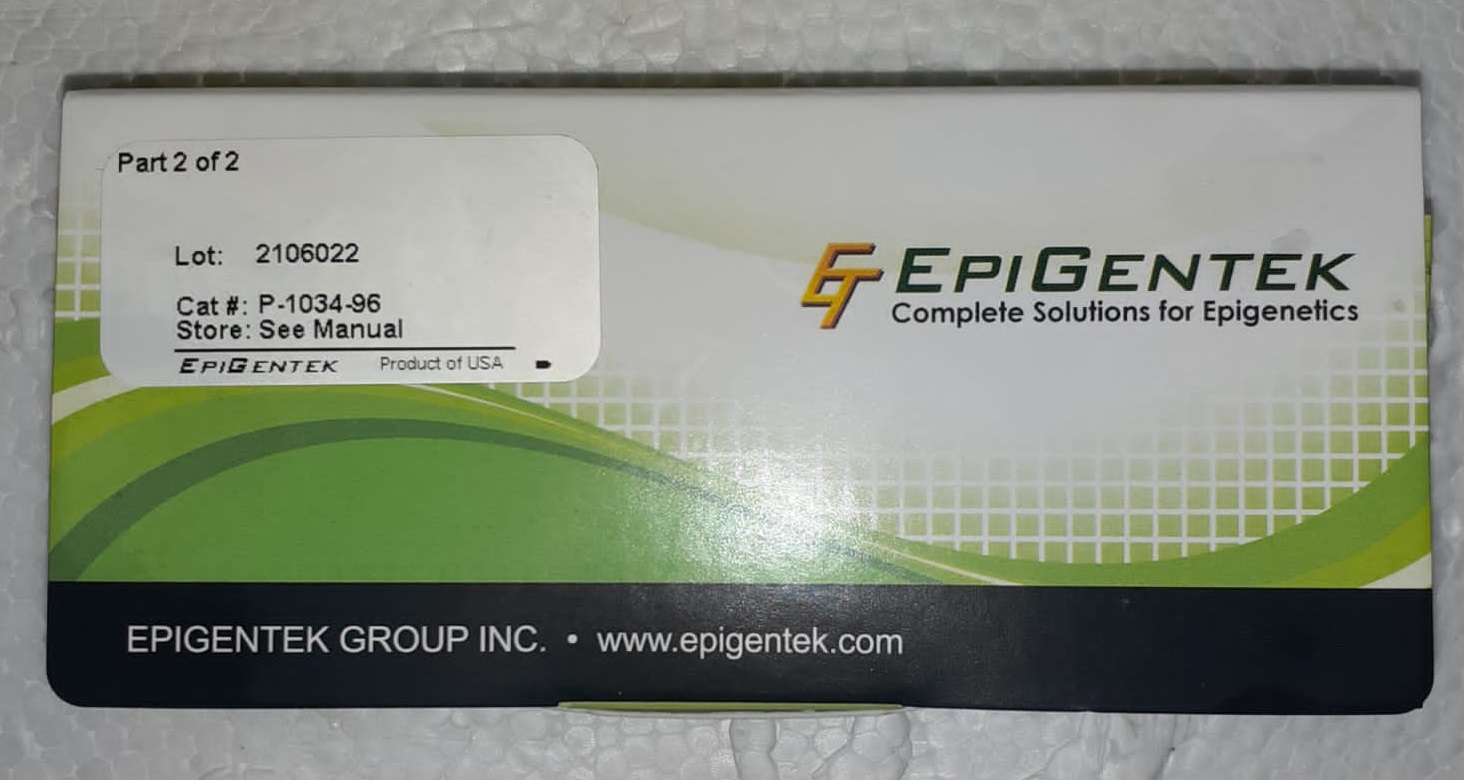
Engineering a novel IgG-like bispecific antibody against enterovirus A71
Frequent outbreaks of enterovirus A71 (EVA71) occur in the Asia-Pacific area, and these are closely associated with severe neurological symptoms in young children. No effective antiviral therapy is currently available for the treatment of EVA71 infection. The development of monoclonal antibodies (mAbs) has demonstrated promise as a novel therapy for the prevention and treatment of infectious diseases. Several medical conditions have been treated using bispecific or multi-specific antibodies that recognize two or more distinct epitopes simultaneously. However, bispecific or multi-specific antibodies often encounter protein expression and product stability problems.
In this study, we developed an IgG-like bispecific antibody (E18-F1) comprising two anti-EVA71 antibodies: E18 mAb and llama-derived F1 single-domain antibody. E18-F1 was demonstrated to exhibit superior binding affinity and antiviral activity compared with E18 or F1. Additionally, E18-F1 not only improved survival rate, but also reduced clinical signs in human SCARB2 receptor (hSCARB2) transgenic mice challenged with a lethal dose of EVA71. Altogether, our results reveal that E18-F1 is a simple format bispecific antibody with promising antiviral activity for EVA71.
Myelin Oligodendrocyte Glycoprotein-antibody-associated Disorder Presenting with Corticomeningeal Encephalitis prior to the Onset of Optic Neuritis
We herein report a case of myelin oligodendrocyte glycoprotein-antibody-associated disorder (MOG-AD) presenting with corticomeningeal encephalitis. The patient exhibited oral ulceration, a mild impairment of consciousness, fever, nausea, nuchal rigidity, positivity for human leukocyte antigen type B51, and neutrophil-dominant pleocytosis and interleukin-6 level in cerebrospinal fluid (CSF). Magnetic resonance imaging (MRI) revealed a right temporal lesion with leptomeningeal gadolinium enhancement.
The initial diagnosis was neuro-Behçet’s disease presenting with meningoencephalitis; however, a cell-based assay detected anti-MOG antibody in the serum and CSF and the patient also experienced bilateral optic neuritis. After administering steroid therapy, his neurologic symptoms and CSF abnormalities improved along with the disappearance of gadolinium enhancement and the lesion on MRI. This case suggests that MOG-AD may present with corticomeningeal encephalitis prior to the onset of optic neuritis.
 Recombinant Bothrops insularis Snake venom serine protease BITS01A | |||
| MBS1389341-002mgBaculovirus | MyBiosource | 0.02mg(Baculovirus) | EUR 1115 |
 Recombinant Bothrops insularis Snake venom serine protease BITS01A | |||
| MBS1389341-002mgEColi | MyBiosource | 0.02mg(E-Coli) | EUR 740 |
 Recombinant Bothrops insularis Snake venom serine protease BITS01A | |||
| MBS1389341-002mgYeast | MyBiosource | 0.02mg(Yeast) | EUR 905 |
 Recombinant Bothrops insularis Snake venom serine protease BITS01A | |||
| MBS1389341-01mgEColi | MyBiosource | 0.1mg(E-Coli) | EUR 890 |
 Recombinant Bothrops insularis Snake venom serine protease BITS01A | |||
| MBS1389341-01mgYeast | MyBiosource | 0.1mg(Yeast) | EUR 1060 |
 Recombinant Bothrops insularis Snake venom vascular endothelial growth factor toxin | |||
| MBS1325913-002mgBaculovirus | MyBiosource | 0.02mg(Baculovirus) | EUR 1045 |
 Recombinant Bothrops insularis Snake venom vascular endothelial growth factor toxin | |||
| MBS1325913-002mgEColi | MyBiosource | 0.02mg(E-Coli) | EUR 625 |
 Recombinant Bothrops insularis Snake venom vascular endothelial growth factor toxin | |||
| MBS1325913-002mgYeast | MyBiosource | 0.02mg(Yeast) | EUR 800 |
 Recombinant Bothrops insularis Snake venom vascular endothelial growth factor toxin | |||
| MBS1325913-01mgEColi | MyBiosource | 0.1mg(E-Coli) | EUR 725 |
 Recombinant Bothrops insularis Snake venom vascular endothelial growth factor toxin | |||
| MBS1325913-01mgYeast | MyBiosource | 0.1mg(Yeast) | EUR 935 |
 Recombinant Bothrops insularis Calglandulin | |||
| MBS1428188-002mgBaculovirus | MyBiosource | 0.02mg(Baculovirus) | EUR 1075 |
 Recombinant Bothrops insularis Calglandulin | |||
| MBS1428188-002mgEColi | MyBiosource | 0.02mg(E-Coli) | EUR 665 |
 Recombinant Bothrops insularis Calglandulin | |||
| MBS1428188-002mgYeast | MyBiosource | 0.02mg(Yeast) | EUR 830 |
 Recombinant Bothrops insularis Calglandulin | |||
| MBS1428188-01mgEColi | MyBiosource | 0.1mg(E-Coli) | EUR 775 |
 Recombinant Bothrops insularis Calglandulin | |||
| MBS1428188-01mgYeast | MyBiosource | 0.1mg(Yeast) | EUR 970 |
 Recombinant Bothrops insularis Phospholipase A2 2 | |||
| MBS1233506-002mgBaculovirus | MyBiosource | 0.02mg(Baculovirus) | EUR 1030 |
 Recombinant Bothrops insularis Phospholipase A2 2 | |||
| MBS1233506-002mgEColi | MyBiosource | 0.02mg(E-Coli) | EUR 605 |
 Recombinant Bothrops insularis Phospholipase A2 2 | |||
| MBS1233506-002mgYeast | MyBiosource | 0.02mg(Yeast) | EUR 785 |
 Recombinant Bothrops insularis Phospholipase A2 2 | |||
| MBS1233506-01mgEColi | MyBiosource | 0.1mg(E-Coli) | EUR 700 |
 Recombinant Bothrops insularis Phospholipase A2 2 | |||
| MBS1233506-01mgYeast | MyBiosource | 0.1mg(Yeast) | EUR 915 |
 Recombinant Bothrops insularis Bothroinsularin subunit alpha | |||
| MBS1189134-002mgBaculovirus | MyBiosource | 0.02mg(Baculovirus) | EUR 1055 |
 Recombinant Bothrops insularis Bothroinsularin subunit alpha | |||
| MBS1189134-002mgEColi | MyBiosource | 0.02mg(E-Coli) | EUR 635 |
 Recombinant Bothrops insularis Bothroinsularin subunit alpha | |||
| MBS1189134-002mgYeast | MyBiosource | 0.02mg(Yeast) | EUR 805 |
 Recombinant Bothrops insularis Bothroinsularin subunit alpha | |||
| MBS1189134-01mgEColi | MyBiosource | 0.1mg(E-Coli) | EUR 740 |
 Recombinant Bothrops insularis Bothroinsularin subunit alpha | |||
| MBS1189134-01mgYeast | MyBiosource | 0.1mg(Yeast) | EUR 945 |
 Recombinant Bothrops insularis Bothroinsularin subunit beta | |||
| MBS1124819-002mgBaculovirus | MyBiosource | 0.02mg(Baculovirus) | EUR 1050 |
 Recombinant Bothrops insularis Bothroinsularin subunit beta | |||
| MBS1124819-002mgEColi | MyBiosource | 0.02mg(E-Coli) | EUR 630 |
 Recombinant Bothrops insularis Bothroinsularin subunit beta | |||
| MBS1124819-002mgYeast | MyBiosource | 0.02mg(Yeast) | EUR 800 |
 Recombinant Bothrops insularis Bothroinsularin subunit beta | |||
| MBS1124819-01mgEColi | MyBiosource | 0.1mg(E-Coli) | EUR 730 |
 Recombinant Bothrops insularis Bothroinsularin subunit beta | |||
| MBS1124819-01mgYeast | MyBiosource | 0.1mg(Yeast) | EUR 940 |
 Recombinant Bothrops insularis C-type lectin BiL | |||
| MBS1374301-002mgBaculovirus | MyBiosource | 0.02mg(Baculovirus) | EUR 1055 |
 Recombinant Bothrops insularis C-type lectin BiL | |||
| MBS1374301-002mgEColi | MyBiosource | 0.02mg(E-Coli) | EUR 640 |
 Recombinant Bothrops insularis C-type lectin BiL | |||
| MBS1374301-002mgYeast | MyBiosource | 0.02mg(Yeast) | EUR 810 |
 Recombinant Bothrops insularis C-type lectin BiL | |||
| MBS1374301-01mgEColi | MyBiosource | 0.1mg(E-Coli) | EUR 745 |
 Recombinant Bothrops insularis C-type lectin BiL | |||
| MBS1374301-01mgYeast | MyBiosource | 0.1mg(Yeast) | EUR 950 |
 Recombinant Bothrops insularis Phospholipase A2 BITP01A | |||
| MBS1336656-002mgBaculovirus | MyBiosource | 0.02mg(Baculovirus) | EUR 1045 |
 Recombinant Bothrops insularis Phospholipase A2 BITP01A | |||
| MBS1336656-002mgEColi | MyBiosource | 0.02mg(E-Coli) | EUR 625 |
 Recombinant Bothrops insularis Phospholipase A2 BITP01A | |||
| MBS1336656-002mgYeast | MyBiosource | 0.02mg(Yeast) | EUR 800 |
 Recombinant Bothrops insularis Phospholipase A2 BITP01A | |||
| MBS1336656-01mgEColi | MyBiosource | 0.1mg(E-Coli) | EUR 725 |
 Recombinant Bothrops insularis Phospholipase A2 BITP01A | |||
| MBS1336656-01mgYeast | MyBiosource | 0.1mg(Yeast) | EUR 935 |
 Recombinant Bothrops insularis L-amino-acid oxidase | |||
| MBS1215911-002mgBaculovirus | MyBiosource | 0.02mg(Baculovirus) | EUR 975 |
 Recombinant Bothrops insularis L-amino-acid oxidase | |||
| MBS1215911-002mgEColi | MyBiosource | 0.02mg(E-Coli) | EUR 535 |
 Recombinant Bothrops insularis L-amino-acid oxidase | |||
| MBS1215911-002mgYeast | MyBiosource | 0.02mg(Yeast) | EUR 725 |
 Recombinant Bothrops insularis L-amino-acid oxidase | |||
| MBS1215911-01mgEColi | MyBiosource | 0.1mg(E-Coli) | EUR 635 |
 Recombinant Bothrops insularis L-amino-acid oxidase | |||
| MBS1215911-01mgYeast | MyBiosource | 0.1mg(Yeast) | EUR 850 |
 Recombinant Bothrops insularis Zinc metalloproteinase BITM02A | |||
| MBS1379001-002mgBaculovirus | MyBiosource | 0.02mg(Baculovirus) | EUR 1120 |
 Recombinant Bothrops insularis Zinc metalloproteinase BITM02A | |||
| MBS1379001-002mgEColi | MyBiosource | 0.02mg(E-Coli) | EUR 700 |
 Recombinant Bothrops insularis Zinc metalloproteinase BITM02A | |||
| MBS1379001-002mgYeast | MyBiosource | 0.02mg(Yeast) | EUR 875 |
 Recombinant Bothrops insularis Zinc metalloproteinase BITM02A | |||
| MBS1379001-01mgEColi | MyBiosource | 0.1mg(E-Coli) | EUR 840 |
 Recombinant Bothrops insularis Zinc metalloproteinase BITM02A | |||
| MBS1379001-01mgYeast | MyBiosource | 0.1mg(Yeast) | EUR 1020 |
 Recombinant Bothrops insularis Zinc metalloproteinase/disintegrin | |||
| MBS1296824-002mgBaculovirus | MyBiosource | 0.02mg(Baculovirus) | EUR 1120 |
 Recombinant Bothrops insularis Zinc metalloproteinase/disintegrin | |||
| MBS1296824-002mgEColi | MyBiosource | 0.02mg(E-Coli) | EUR 700 |
 Recombinant Bothrops insularis Zinc metalloproteinase/disintegrin | |||
| MBS1296824-002mgYeast | MyBiosource | 0.02mg(Yeast) | EUR 875 |
 Recombinant Bothrops insularis Zinc metalloproteinase/disintegrin | |||
| MBS1296824-01mgEColi | MyBiosource | 0.1mg(E-Coli) | EUR 840 |
 Recombinant Bothrops insularis Zinc metalloproteinase/disintegrin | |||
| MBS1296824-01mgYeast | MyBiosource | 0.1mg(Yeast) | EUR 1020 |
 Recombinant Bothrops insularis Zinc metalloproteinase-disintegrin BITM06A | |||
| MBS1359286-002mgBaculovirus | MyBiosource | 0.02mg(Baculovirus) | EUR 1290 |
 Recombinant Bothrops insularis Zinc metalloproteinase-disintegrin BITM06A | |||
| MBS1359286-002mgEColi | MyBiosource | 0.02mg(E-Coli) | EUR 970 |
 Recombinant Bothrops insularis Zinc metalloproteinase-disintegrin BITM06A | |||
| MBS1359286-002mgYeast | MyBiosource | 0.02mg(Yeast) | EUR 1085 |
 Recombinant Bothrops insularis Zinc metalloproteinase-disintegrin BITM06A | |||
| MBS1359286-01mgEColi | MyBiosource | 0.1mg(E-Coli) | EUR 1135 |
 Recombinant Bothrops insularis Zinc metalloproteinase-disintegrin BITM06A | |||
| MBS1359286-01mgYeast | MyBiosource | 0.1mg(Yeast) | EUR 1235 |
 Native Bothrops atrox snake Defibrase, 100BU/mg | |||
| PHAM-176 | Creative Enzymes | 50 ug | EUR 298 |
Description: 100BU/mg | |||
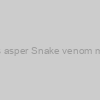 Recombinant Bothrops asper Snake venom metalloproteinase BaP1 | |||
| CSB-EP306655BUT | Cusabio | 9374 mg | Ask for price |
 Recombinant Bothrops jararaca Snake venom serine protease BPA | |||
| MBS1468343-002mgBaculovirus | MyBiosource | 0.02mg(Baculovirus) | EUR 1120 |
 Recombinant Bothrops jararaca Snake venom serine protease BPA | |||
| MBS1468343-002mgEColi | MyBiosource | 0.02mg(E-Coli) | EUR 745 |
 Recombinant Bothrops jararaca Snake venom serine protease BPA | |||
| MBS1468343-002mgYeast | MyBiosource | 0.02mg(Yeast) | EUR 905 |
 Recombinant Bothrops jararaca Snake venom serine protease BPA | |||
| MBS1468343-01mgEColi | MyBiosource | 0.1mg(E-Coli) | EUR 890 |
 Recombinant Bothrops jararaca Snake venom serine protease BPA | |||
| MBS1468343-01mgYeast | MyBiosource | 0.1mg(Yeast) | EUR 1060 |
 Recombinant Bothrops jararaca Snake venom serine protease HS112 | |||
| MBS1374706-002mgBaculovirus | MyBiosource | 0.02mg(Baculovirus) | EUR 1125 |
 Recombinant Bothrops jararaca Snake venom serine protease HS112 | |||
| MBS1374706-002mgEColi | MyBiosource | 0.02mg(E-Coli) | EUR 740 |
 Recombinant Bothrops jararaca Snake venom serine protease HS112 | |||
| MBS1374706-002mgYeast | MyBiosource | 0.02mg(Yeast) | EUR 905 |
 Recombinant Bothrops jararaca Snake venom serine protease HS112 | |||
| MBS1374706-01mgEColi | MyBiosource | 0.1mg(E-Coli) | EUR 885 |
 Recombinant Bothrops jararaca Snake venom serine protease HS112 | |||
| MBS1374706-01mgYeast | MyBiosource | 0.1mg(Yeast) | EUR 1055 |
 Recombinant Bothrops jararaca Snake venom serine protease HS114 | |||
| MBS1337157-002mgBaculovirus | MyBiosource | 0.02mg(Baculovirus) | EUR 1120 |
 Recombinant Bothrops jararaca Snake venom serine protease HS114 | |||
| MBS1337157-002mgEColi | MyBiosource | 0.02mg(E-Coli) | EUR 745 |
 Recombinant Bothrops jararaca Snake venom serine protease HS114 | |||
| MBS1337157-002mgYeast | MyBiosource | 0.02mg(Yeast) | EUR 905 |
 Recombinant Bothrops jararaca Snake venom serine protease HS114 | |||
| MBS1337157-01mgEColi | MyBiosource | 0.1mg(E-Coli) | EUR 890 |
 Recombinant Bothrops jararaca Snake venom serine protease HS114 | |||
| MBS1337157-01mgYeast | MyBiosource | 0.1mg(Yeast) | EUR 1060 |
 Recombinant Bothrops alternatus Snake venom serine protease BthaTL | |||
| MBS1407936-002mgBaculovirus | MyBiosource | 0.02mg(Baculovirus) | EUR 1115 |
 Recombinant Bothrops alternatus Snake venom serine protease BthaTL | |||
| MBS1407936-002mgEColi | MyBiosource | 0.02mg(E-Coli) | EUR 740 |
 Recombinant Bothrops alternatus Snake venom serine protease BthaTL | |||
| MBS1407936-002mgYeast | MyBiosource | 0.02mg(Yeast) | EUR 905 |
 Recombinant Bothrops alternatus Snake venom serine protease BthaTL | |||
| MBS1407936-01mgEColi | MyBiosource | 0.1mg(E-Coli) | EUR 890 |
 Recombinant Bothrops alternatus Snake venom serine protease BthaTL | |||
| MBS1407936-01mgYeast | MyBiosource | 0.1mg(Yeast) | EUR 1060 |
 Recombinant Bothrops jararacussu Snake venom serine protease homolog | |||
| MBS1355577-002mgBaculovirus | MyBiosource | 0.02mg(Baculovirus) | EUR 1120 |
 Recombinant Bothrops jararacussu Snake venom serine protease homolog | |||
| MBS1355577-002mgEColi | MyBiosource | 0.02mg(E-Coli) | EUR 745 |
 Recombinant Bothrops jararacussu Snake venom serine protease homolog | |||
| MBS1355577-002mgYeast | MyBiosource | 0.02mg(Yeast) | EUR 910 |
 Recombinant Bothrops jararacussu Snake venom serine protease homolog | |||
| MBS1355577-01mgEColi | MyBiosource | 0.1mg(E-Coli) | EUR 895 |
 Recombinant Bothrops jararacussu Snake venom serine protease homolog | |||
| MBS1355577-01mgYeast | MyBiosource | 0.1mg(Yeast) | EUR 1065 |
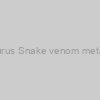 Recombinant Bothrops leucurus Snake venom metalloproteinase leucurolysin-A | |||
| CSB-EP308157BIY | Cusabio | 2671 mg | Ask for price |
 Recombinant Bothrops leucurus Snake venom metalloproteinase leucurolysin-A | |||
| MBS1242089-002mgEColi | MyBiosource | 0.02mg(E-Coli) | EUR 375 |
 Recombinant Bothrops leucurus Snake venom metalloproteinase leucurolysin-A | |||
| MBS1242089-01mgEColi | MyBiosource | 0.1mg(E-Coli) | EUR 635 |
 Recombinant Bothrops leucurus Snake venom metalloproteinase leucurolysin-A | |||
| MBS1242089-1mgEColi | MyBiosource | 1mg(E-Coli) | EUR 1925 |
 Recombinant Bothrops leucurus Snake venom metalloproteinase leucurolysin-A | |||
| MBS1242089-5x1mgEColi | MyBiosource | 5x1mg(E-Coli) | EUR 8405 |
 Recombinant Bothrops leucurus Snake venom metalloproteinase leucurolysin-A | |||
| RPC27582-100ug | Biomatik Corporation | 100ug | EUR 801.9 |
 Recombinant Bothrops leucurus Snake venom metalloproteinase leucurolysin-A | |||
| RPC27582-1mg | Biomatik Corporation | 1mg | EUR 2885.2 |
 Recombinant Bothrops leucurus Snake venom metalloproteinase leucurolysin-A | |||
| RPC27582-20ug | Biomatik Corporation | 20ug | EUR 448.1 |
 Recombinant Bothrops jararaca Snake venom vascular endothelial growth factor toxin | |||
| MBS1279297-002mgBaculovirus | MyBiosource | 0.02mg(Baculovirus) | EUR 1045 |
 Recombinant Bothrops jararaca Snake venom vascular endothelial growth factor toxin | |||
| MBS1279297-002mgEColi | MyBiosource | 0.02mg(E-Coli) | EUR 625 |
 Recombinant Bothrops jararaca Snake venom vascular endothelial growth factor toxin | |||
| MBS1279297-002mgYeast | MyBiosource | 0.02mg(Yeast) | EUR 800 |
 Recombinant Bothrops jararaca Snake venom vascular endothelial growth factor toxin | |||
| MBS1279297-01mgEColi | MyBiosource | 0.1mg(E-Coli) | EUR 725 |
 Recombinant Bothrops jararaca Snake venom vascular endothelial growth factor toxin | |||
| MBS1279297-01mgYeast | MyBiosource | 0.1mg(Yeast) | EUR 935 |
 Recombinant Bothrops erythromelas Snake venom vascular endothelial growth factor toxin | |||
| MBS1364798-002mgBaculovirus | MyBiosource | 0.02mg(Baculovirus) | EUR 1045 |
 Recombinant Bothrops erythromelas Snake venom vascular endothelial growth factor toxin | |||
| MBS1364798-002mgEColi | MyBiosource | 0.02mg(E-Coli) | EUR 625 |
 Recombinant Bothrops erythromelas Snake venom vascular endothelial growth factor toxin | |||
| MBS1364798-002mgYeast | MyBiosource | 0.02mg(Yeast) | EUR 800 |
 Recombinant Bothrops erythromelas Snake venom vascular endothelial growth factor toxin | |||
| MBS1364798-01mgEColi | MyBiosource | 0.1mg(E-Coli) | EUR 725 |
 Recombinant Bothrops erythromelas Snake venom vascular endothelial growth factor toxin | |||
| MBS1364798-01mgYeast | MyBiosource | 0.1mg(Yeast) | EUR 935 |
) Recombinant Drosophila insularis Alcohol dehydrogenase (Adh) | |||
| MBS1310241-002mgBaculovirus | MyBiosource | 0.02mg(Baculovirus) | EUR 1135 |
) Recombinant Drosophila insularis Alcohol dehydrogenase (Adh) | |||
| MBS1310241-002mgEColi | MyBiosource | 0.02mg(E-Coli) | EUR 770 |
) Recombinant Drosophila insularis Alcohol dehydrogenase (Adh) | |||
| MBS1310241-002mgYeast | MyBiosource | 0.02mg(Yeast) | EUR 925 |
) Recombinant Drosophila insularis Alcohol dehydrogenase (Adh) | |||
| MBS1310241-01mgEColi | MyBiosource | 0.1mg(E-Coli) | EUR 920 |
) Recombinant Drosophila insularis Alcohol dehydrogenase (Adh) | |||
| MBS1310241-01mgYeast | MyBiosource | 0.1mg(Yeast) | EUR 1085 |
) Recombinant Drosophila insularis Period circadian protein (per) | |||
| MBS1069345-002mgBaculovirus | MyBiosource | 0.02mg(Baculovirus) | EUR 1265 |
) Recombinant Drosophila insularis Period circadian protein (per) | |||
| MBS1069345-002mgEColi | MyBiosource | 0.02mg(E-Coli) | EUR 935 |
) Recombinant Drosophila insularis Period circadian protein (per) | |||
| MBS1069345-002mgYeast | MyBiosource | 0.02mg(Yeast) | EUR 1055 |
) Recombinant Drosophila insularis Period circadian protein (per) | |||
| MBS1069345-01mgEColi | MyBiosource | 0.1mg(E-Coli) | EUR 1125 |
) Recombinant Drosophila insularis Period circadian protein (per) | |||
| MBS1069345-01mgYeast | MyBiosource | 0.1mg(Yeast) | EUR 1200 |
, partial) Recombinant Mogera insularis Cytochrome b (MT-CYB), partial | |||
| MBS7099873-INQUIRE | MyBiosource | INQUIRE | Ask for price |
, partial) Recombinant Dipodomys insularis Cytochrome b (MT-CYB), partial | |||
| MBS7083547-INQUIRE | MyBiosource | INQUIRE | Ask for price |
 Recombinant Bothrops jararacussu Phospholipase A2 bothropstoxin-2 | |||
| MBS1054417-002mgBaculovirus | MyBiosource | 0.02mg(Baculovirus) | EUR 1045 |
 Recombinant Bothrops jararacussu Phospholipase A2 bothropstoxin-2 | |||
| MBS1054417-002mgEColi | MyBiosource | 0.02mg(E-Coli) | EUR 625 |
 Recombinant Bothrops jararacussu Phospholipase A2 bothropstoxin-2 | |||
| MBS1054417-002mgYeast | MyBiosource | 0.02mg(Yeast) | EUR 800 |
 Recombinant Bothrops jararacussu Phospholipase A2 bothropstoxin-2 | |||
| MBS1054417-01mgEColi | MyBiosource | 0.1mg(E-Coli) | EUR 725 |
 Recombinant Bothrops jararacussu Phospholipase A2 bothropstoxin-2 | |||
| MBS1054417-01mgYeast | MyBiosource | 0.1mg(Yeast) | EUR 935 |
 Recombinant Bothrops asper Snaclec aspercetin subunit beta | |||
| MBS1207511-002mgBaculovirus | MyBiosource | 0.02mg(Baculovirus) | EUR 985 |
 Recombinant Bothrops asper Snaclec aspercetin subunit beta | |||
| MBS1207511-002mgEColi | MyBiosource | 0.02mg(E-Coli) | EUR 550 |
 Recombinant Bothrops asper Snaclec aspercetin subunit beta | |||
| MBS1207511-002mgYeast | MyBiosource | 0.02mg(Yeast) | EUR 740 |
 Recombinant Bothrops asper Snaclec aspercetin subunit beta | |||
| MBS1207511-01mgEColi | MyBiosource | 0.1mg(E-Coli) | EUR 655 |
 Recombinant Bothrops asper Snaclec aspercetin subunit beta | |||
| MBS1207511-01mgYeast | MyBiosource | 0.1mg(Yeast) | EUR 865 |
 Recombinant Bothrops jararaca Snaclec botrocetin subunit beta | |||
| MBS1262342-002mgBaculovirus | MyBiosource | 0.02mg(Baculovirus) | EUR 1045 |
 Recombinant Bothrops jararaca Snaclec botrocetin subunit beta | |||
| MBS1262342-002mgEColi | MyBiosource | 0.02mg(E-Coli) | EUR 625 |
 Recombinant Bothrops jararaca Snaclec botrocetin subunit beta | |||
| MBS1262342-002mgYeast | MyBiosource | 0.02mg(Yeast) | EUR 800 |
 Recombinant Bothrops jararaca Snaclec botrocetin subunit beta | |||
| MBS1262342-01mgEColi | MyBiosource | 0.1mg(E-Coli) | EUR 730 |
 Recombinant Bothrops jararaca Snaclec botrocetin subunit beta | |||
| MBS1262342-01mgYeast | MyBiosource | 0.1mg(Yeast) | EUR 935 |
 Recombinant Bothrops asper Snaclec aspercetin subunit alpha | |||
| MBS1041979-002mgBaculovirus | MyBiosource | 0.02mg(Baculovirus) | EUR 985 |
 Recombinant Bothrops asper Snaclec aspercetin subunit alpha | |||
| MBS1041979-002mgEColi | MyBiosource | 0.02mg(E-Coli) | EUR 550 |
 Recombinant Bothrops asper Snaclec aspercetin subunit alpha | |||
| MBS1041979-002mgYeast | MyBiosource | 0.02mg(Yeast) | EUR 740 |
 Recombinant Bothrops asper Snaclec aspercetin subunit alpha | |||
| MBS1041979-01mgEColi | MyBiosource | 0.1mg(E-Coli) | EUR 655 |
 Recombinant Bothrops asper Snaclec aspercetin subunit alpha | |||
| MBS1041979-01mgYeast | MyBiosource | 0.1mg(Yeast) | EUR 865 |
 Recombinant Bothrops jararaca Snaclec botrocetin subunit alpha | |||
| MBS1089614-002mgBaculovirus | MyBiosource | 0.02mg(Baculovirus) | EUR 1055 |
 Recombinant Bothrops jararaca Snaclec botrocetin subunit alpha | |||
| MBS1089614-002mgEColi | MyBiosource | 0.02mg(E-Coli) | EUR 635 |
 Recombinant Bothrops jararaca Snaclec botrocetin subunit alpha | |||
| MBS1089614-002mgYeast | MyBiosource | 0.02mg(Yeast) | EUR 810 |
 Recombinant Bothrops jararaca Snaclec botrocetin subunit alpha | |||
| MBS1089614-01mgEColi | MyBiosource | 0.1mg(E-Coli) | EUR 740 |
 Recombinant Bothrops jararaca Snaclec botrocetin subunit alpha | |||
| MBS1089614-01mgYeast | MyBiosource | 0.1mg(Yeast) | EUR 945 |
 Recombinant Bothrops jararacussu Phospholipase A2 homolog bothropstoxin-1 | |||
| MBS1398251-002mgBaculovirus | MyBiosource | 0.02mg(Baculovirus) | EUR 1045 |
 Recombinant Bothrops jararacussu Phospholipase A2 homolog bothropstoxin-1 | |||
| MBS1398251-002mgEColi | MyBiosource | 0.02mg(E-Coli) | EUR 620 |
 Recombinant Bothrops jararacussu Phospholipase A2 homolog bothropstoxin-1 | |||
| MBS1398251-002mgYeast | MyBiosource | 0.02mg(Yeast) | EUR 795 |
 Recombinant Bothrops jararacussu Phospholipase A2 homolog bothropstoxin-1 | |||
| MBS1398251-01mgEColi | MyBiosource | 0.1mg(E-Coli) | EUR 725 |
 Recombinant Bothrops jararacussu Phospholipase A2 homolog bothropstoxin-1 | |||
| MBS1398251-01mgYeast | MyBiosource | 0.1mg(Yeast) | EUR 935 |
 Recombinant Bothrops jararaca Bothrojaracin subunit beta | |||
| MBS1429426-002mgBaculovirus | MyBiosource | 0.02mg(Baculovirus) | EUR 1050 |
 Recombinant Bothrops jararaca Bothrojaracin subunit beta | |||
| MBS1429426-002mgEColi | MyBiosource | 0.02mg(E-Coli) | EUR 630 |
 Recombinant Bothrops jararaca Bothrojaracin subunit beta | |||
| MBS1429426-002mgYeast | MyBiosource | 0.02mg(Yeast) | EUR 800 |
 Recombinant Bothrops jararaca Bothrojaracin subunit beta | |||
| MBS1429426-01mgEColi | MyBiosource | 0.1mg(E-Coli) | EUR 730 |
 Recombinant Bothrops jararaca Bothrojaracin subunit beta | |||
| MBS1429426-01mgYeast | MyBiosource | 0.1mg(Yeast) | EUR 940 |
 Recombinant Bothrops asper Phospholipase A2 | |||
| MBS1098156-002mgBaculovirus | MyBiosource | 0.02mg(Baculovirus) | EUR 1045 |
 Recombinant Bothrops asper Phospholipase A2 | |||
| MBS1098156-002mgEColi | MyBiosource | 0.02mg(E-Coli) | EUR 625 |
 Recombinant Bothrops asper Phospholipase A2 | |||
| MBS1098156-002mgYeast | MyBiosource | 0.02mg(Yeast) | EUR 800 |
 Recombinant Bothrops asper Phospholipase A2 | |||
| MBS1098156-01mgEColi | MyBiosource | 0.1mg(E-Coli) | EUR 725 |
 Recombinant Bothrops asper Phospholipase A2 | |||
| MBS1098156-01mgYeast | MyBiosource | 0.1mg(Yeast) | EUR 935 |
 Recombinant Bothrops jararaca Bothrojaracin subunit alpha | |||
| MBS1330365-002mgBaculovirus | MyBiosource | 0.02mg(Baculovirus) | EUR 1055 |
 Recombinant Bothrops jararaca Bothrojaracin subunit alpha | |||
| MBS1330365-002mgEColi | MyBiosource | 0.02mg(E-Coli) | EUR 635 |
 Recombinant Bothrops jararaca Bothrojaracin subunit alpha | |||
| MBS1330365-002mgYeast | MyBiosource | 0.02mg(Yeast) | EUR 805 |
 Recombinant Bothrops jararaca Bothrojaracin subunit alpha | |||
| MBS1330365-01mgEColi | MyBiosource | 0.1mg(E-Coli) | EUR 740 |
 Recombinant Bothrops jararaca Bothrojaracin subunit alpha | |||
| MBS1330365-01mgYeast | MyBiosource | 0.1mg(Yeast) | EUR 945 |
 Recombinant Bothrops pictus Phospholipase A2 | |||
| MBS1475966-005mgBaculovirus | MyBiosource | 0.05mg(Baculovirus) | EUR 970 |
 Recombinant Bothrops pictus Phospholipase A2 | |||
| MBS1475966-005mgEColi | MyBiosource | 0.05mg(E-Coli) | EUR 625 |
 Recombinant Bothrops pictus Phospholipase A2 | |||
| MBS1475966-005mgYeast | MyBiosource | 0.05mg(Yeast) | EUR 800 |
 Recombinant Bothrops pictus Phospholipase A2 | |||
| MBS1475966-02mgEColi | MyBiosource | 0.2mg(E-Coli) | EUR 805 |
 Recombinant Bothrops pictus Phospholipase A2 | |||
| MBS1475966-05mgEColi | MyBiosource | 0.5mg(E-Coli) | EUR 880 |
 Recombinant Bothrops leucurus Phospholipase A2 | |||
| MBS1173421-002mgBaculovirus | MyBiosource | 0.02mg(Baculovirus) | EUR 1045 |
 Recombinant Bothrops leucurus Phospholipase A2 | |||
| MBS1173421-002mgEColi | MyBiosource | 0.02mg(E-Coli) | EUR 625 |
 Recombinant Bothrops leucurus Phospholipase A2 | |||
| MBS1173421-002mgMammalianCell | MyBiosource | 0.02mg(Mammalian-Cell) | EUR 1280 |
 Recombinant Bothrops leucurus Phospholipase A2 | |||
| MBS1173421-01mgEColi | MyBiosource | 0.1mg(E-Coli) | EUR 725 |
 Recombinant Bothrops leucurus Phospholipase A2 | |||
| MBS1173421-1mgEColi | MyBiosource | 1mg(E-Coli) | EUR 1280 |
 Recombinant Bothrops jararaca Phospholipase A2 | |||
| MBS1258765-002mgBaculovirus | MyBiosource | 0.02mg(Baculovirus) | EUR 1045 |
 Recombinant Bothrops jararaca Phospholipase A2 | |||
| MBS1258765-002mgEColi | MyBiosource | 0.02mg(E-Coli) | EUR 625 |
 Recombinant Bothrops jararaca Phospholipase A2 | |||
| MBS1258765-002mgYeast | MyBiosource | 0.02mg(Yeast) | EUR 800 |
 Recombinant Bothrops jararaca Phospholipase A2 | |||
| MBS1258765-01mgEColi | MyBiosource | 0.1mg(E-Coli) | EUR 725 |
 Recombinant Bothrops jararaca Phospholipase A2 | |||
| MBS1258765-01mgYeast | MyBiosource | 0.1mg(Yeast) | EUR 935 |
 Recombinant Bothrops jararaca Phospholipase A2 | |||
| MBS7100979-005mgBaculovirus | MyBiosource | 0.05mg(Baculovirus) | EUR 875 |
 Recombinant Bothrops jararaca Phospholipase A2 | |||
| MBS7100979-005mgEColi | MyBiosource | 0.05mg(E-Coli) | EUR 495 |
 Recombinant Bothrops jararaca Phospholipase A2 | |||
| MBS7100979-005mgYeast | MyBiosource | 0.05mg(Yeast) | EUR 695 |
 Recombinant Bothrops jararaca Phospholipase A2 | |||
| MBS7100979-02mgEColi | MyBiosource | 0.2mg(E-Coli) | EUR 645 |
 Recombinant Bothrops jararaca Phospholipase A2 | |||
| MBS7100979-05mgEColi | MyBiosource | 0.5mg(E-Coli) | EUR 705 |
 Recombinant Bothrops jararaca Jararafibrase-3 | |||
| MBS1119135-002mgBaculovirus | MyBiosource | 0.02mg(Baculovirus) | EUR 970 |

